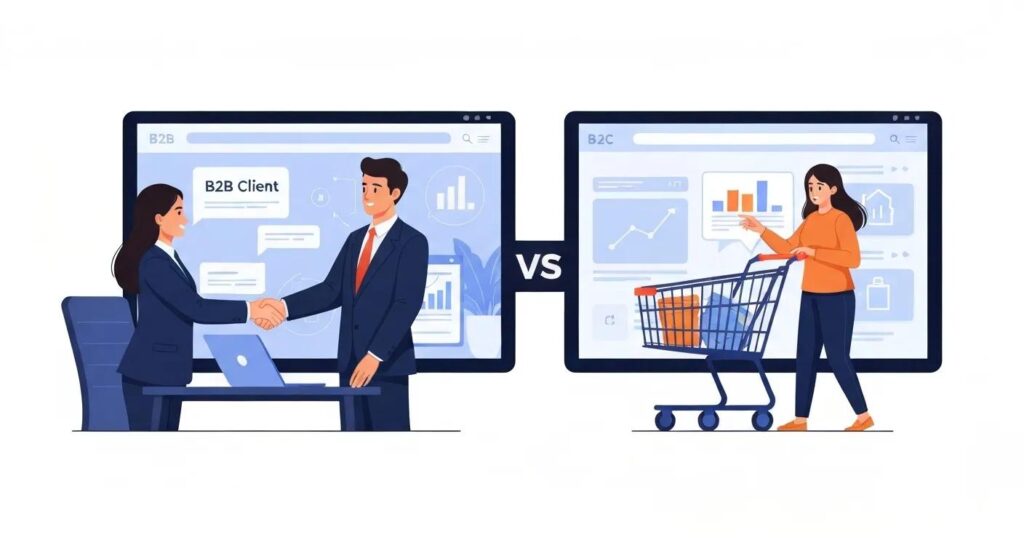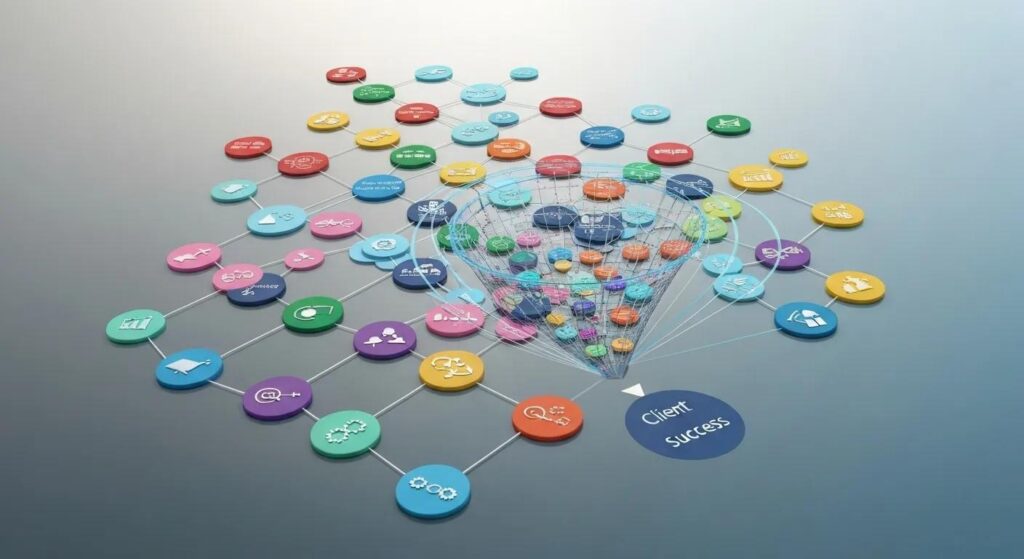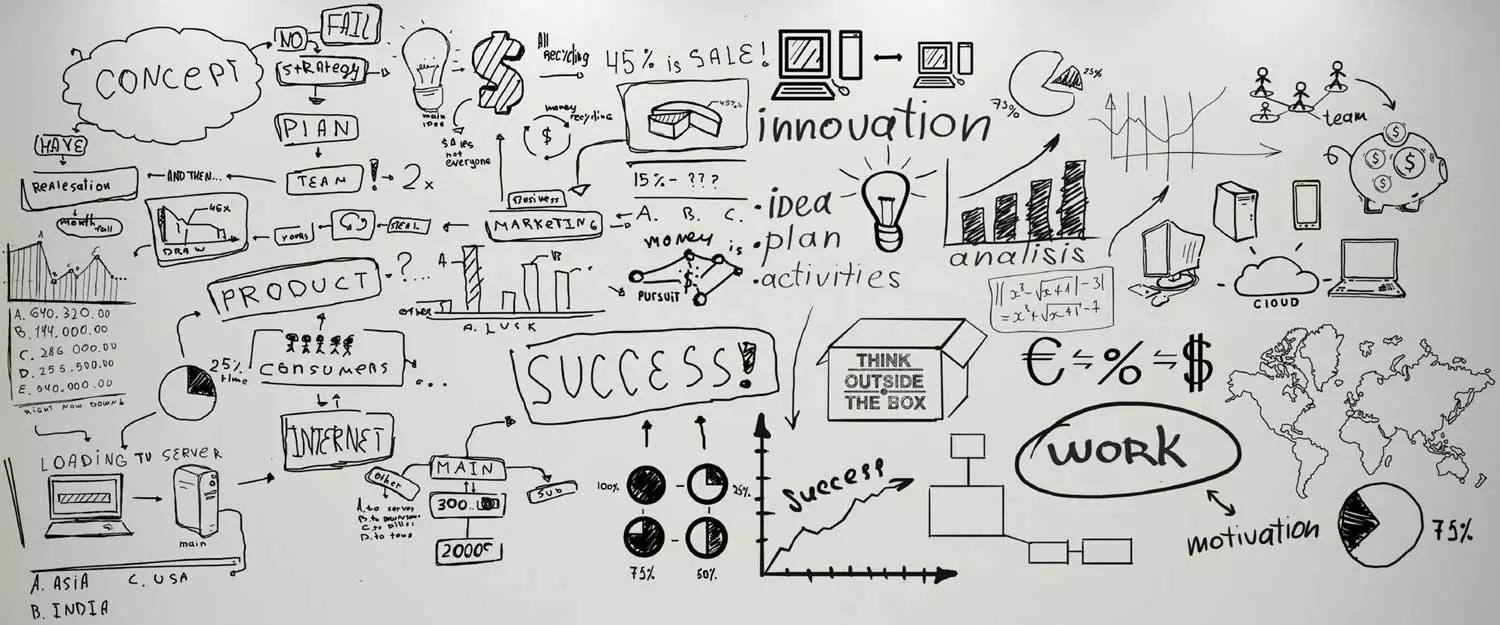Mastering Client Acquisition: Proven Strategies for Lasting Business Growth
Feeling the pressure to consistently attract high-value clients and accelerate your revenue growth? This essential guide unpacks powerful client acquisition marketing tactics designed to supercharge your lead volume, sharpen your conversion rates, and deliver undeniable ROI. You’ll dive deep into top-tier strategies, smart channel selection, effective lead generation methods, the nuances of B2B versus B2C approaches, cutting-edge digital marketing best practices, seamless multi-channel integration, and the analytics you need to fuel sustainable expansion. Throughout, we’ll highlight Astound Media’s deep expertise in digital marketing and web development, showcasing real-world applications and how our services can elevate your growth trajectory. Understanding these client acquisition marketing techniques is crucial for any business aiming for sustained success.
“The most effective client acquisition strategies are not about casting a wide net, but about casting the right net, precisely where your ideal clients are already looking for solutions.” – Jorge Leger, Founder and Digital Marketing Consultant, Astound Media.
What Are the Most Effective Client Acquisition Strategies?
The most impactful client acquisition strategies are a masterful blend of precision outreach, compelling value-driven messaging, and finely tuned conversion pathways that propel your business forward. By meticulously defining your ideal customer profiles, orchestrating seamless touchpoints, and deploying data-informed tactics, you can dramatically boost lead flow and significantly improve your win rates. Mastering these client acquisition marketing techniques requires a deep understanding of your target audience.
How Do Different Strategies Impact Client Growth?
Each acquisition strategy plays a distinct role in fostering client growth, offering unique mechanisms and benefits:
- Inbound Marketing: This approach draws in qualified prospects by publishing valuable, relevant content that resonates through organic search and social sharing.
- Outbound Sales: Directly accelerate your pipeline volume through proactive outreach, including precisely targeted cold email campaigns and strategic calls, leading to more predictable growth.
- Referral Programs: Leverage your existing satisfied clients to generate trusted introductions, naturally boosting conversion rates and reducing acquisition costs.
- Partnerships: Forge strategic co-marketing alliances with complementary businesses to tap into shared audiences, expanding your reach efficiently and cost-effectively.
These powerful approaches often achieve their most significant impact when orchestrated together, setting the stage for a deeper exploration of market-specific methods. Implementing effective client acquisition marketing techniques across these areas is key.
Which Client Acquisition Methods Work Best for B2B vs. B2C?

Here’s a breakdown of methods expertly tailored to the distinct buying dynamics of each market:
Tailored Client Acquisition Strategies for B2B and B2C Markets
Successfully acquiring clients demands distinct strategies for Business-to-Business (B2B) and Business-to-Consumer (B2C) markets, reflecting fundamental differences in buying behaviors, decision-making processes, and sales cycles. B2B acquisition typically involves more extended sales cycles and a profound emphasis on cultivating relationships, whereas B2C strategies often prioritize broad reach, immediate engagement, and capturing impulse buys. Tailored lead nurturing and precisely targeted content are absolutely critical for optimizing conversion rates in both sectors. Understanding these nuances is fundamental to effective client acquisition marketing techniques.
This citation powerfully reinforces the article’s core argument: B2B and B2C acquisition methods are fundamentally different. It underscores the necessity of adapting strategies, including lead generation and nurturing, to the unique characteristics of each market for maximum effectiveness.
How to Align Acquisition Strategies with Business Goals?
To ensure your acquisition efforts are perfectly aligned with your overarching business objectives:
- Define Clear Growth Objectives: Pinpoint your revenue targets, identify key market segments, and establish a realistic timeline.
- Map Channel KPIs Precisely: Assign specific metrics, such as cost per acquisition (CPA) or lead quality scores, to each tactic you employ.
- Integrate Sales and Marketing Seamlessly: Foster unified workflows between your prospecting and closing teams for maximum efficiency.
- Conduct Rigorous Quarterly Reviews: Adjust your budgets and messaging strategically based on in-depth performance data.
Embedding these strategic checkpoints ensures that your acquisition activities directly drive the desired business outcomes and prepare you to meticulously evaluate channel ROI. Applying these principles to client acquisition marketing techniques ensures a focused and practical approach.
Which Customer Acquisition Channels Deliver the Best ROI?
Customer acquisition channels unlock superior ROI by expertly balancing reach, cost-effectiveness, and conversion potential. Optimizing this dynamic mix is key to elevating profitability and accelerating growth velocity.
How to Leverage Digital Marketing Channels for Client Growth?

Digital marketing channels offer unparalleled scalability in targeting and precision in performance tracking. The most impactful channels include:
- Search Engine Optimization (SEO): Elevate your organic visibility, driving consistent, cost-effective traffic that converts.
- Pay-Per-Click Advertising (PPC): Secure immediate visibility across search engines and social platforms with budgets you can precisely control.
- Email Marketing: Nurture your leads through sophisticated automated workflows designed to boost engagement and drive repeat conversions.
- Content Marketing: Publish high-value articles, insightful whitepapers, and engaging videos to educate your audience and capture qualified leads.
- Social Media Marketing: Cultivate brand awareness and foster community engagement, creating a powerful engine for referral traffic.
Exceptional Return on Investment from Digital Marketing Channels
Extensive research consistently highlights the substantial return on investment offered by digital marketing channels, with email marketing standing out as a top performer. Studies reveal that email marketing can generate an average ROI ranging from an impressive 3,600% to 4,200%, positioning it as one of the most potent tactics for both lead generation and conversion. Content marketing also plays a pivotal role in driving deep engagement and attracting highly qualified leads. These findings underscore the importance of integrating robust client acquisition marketing techniques into your digital strategy.
This compelling research directly validates the article’s emphasis on leveraging digital marketing channels, particularly email and content marketing, for their exceptional ROI and proven effectiveness in client acquisition and sophisticated lead nurturing.
For organizations seeking expertly tailored execution and advanced analytics capabilities, we invite you to explore our Services page. Discover how strategic channel integration can dramatically amplify your growth.
This foundational understanding of digital channels naturally leads to how specific platforms contribute to acquisition success.
What Role Do Social Media and Email Marketing Play in Acquisition?
Social media and email marketing are powerful allies, complementing each other beautifully:
- Social Media: Forge strong brand affinity through precisely targeted ads and proactive community management, generating initial interest and invaluable social proof.
- Email Marketing: Convert engaged followers into high-quality leads via segmented campaigns, personalized offers, and intelligent automated drip sequences.
By harmonizing community-driven engagement with direct, personalized messaging, you cultivate both top-of-funnel awareness and bottom-of-funnel conversions, paving the way for seamless integration with offline efforts.
How Can Offline Channels Complement Digital Efforts?
Offline acquisition channels powerfully reinforce your digital strategies by introducing tangible, memorable touchpoints:
- Events and Trade Shows: Facilitate invaluable face-to-face relationship-building and dynamic, real-time product demonstrations.
- Print Advertising: Reach specific local markets with high-frequency brand impressions that build recognition.
- Direct Mail: Deliver highly personalized offers directly to high-value prospects, effectively driving them back to your digital channels for conversion.
- Networking Groups: Foster peer referrals and build credibility through active participation in industry associations.
Integrating these impactful offline interactions with sophisticated digital retargeting nurtures prospects across multiple dimensions, guiding them toward conversion-centric lead-generation techniques.
What Are the Top Lead Generation Techniques That Convert?
Lead generation techniques are designed to capture and qualify prospects by delivering tangible value at every stage of their journey. The most effective methods seamlessly combine content, paid media, and organic channels. Implementing these client acquisition marketing techniques is vital for a healthy sales pipeline.
How to Use Content Marketing for Effective Lead Generation?
Content marketing is the engine that fuels lead acquisition by offering clear solutions to your audience’s most pressing pain points. Focus on delivering:
- Educational Blog Posts: Capture valuable search-driven traffic by providing in-depth, authoritative guides.
- Gated Resources: Convert interested readers into engaged subscribers by offering compelling whitepapers and e-books.
- Interactive Tools: Engage visitors with interactive calculators or assessments that collect contact details naturally.
- Video Tutorials: Demonstrate your product or service’s value compellingly, building trust and driving demo requests.
By meticulously mapping your content to each stage of the buyer’s journey, you maintain sustained engagement and build a pipeline brimming with high-quality leads.
What Are the Best Practices for Paid Advertising in Client Acquisition?
Paid advertising converts prospects at scale when it’s meticulously optimized for relevance and maximum ROI:
- Audience Segmentation: Target your ads with laser precision based on demographics, behaviors, and specific interests.
- A/B Testing: Continuously refine your creatives, headlines, and calls to action for peak performance.
- Budget Allocation: Strategically shift spend toward your highest-performing campaigns on a weekly basis.
- Retargeting: Re-engage website visitors with highly personalized ad sequences that bring them back.
These sophisticated tactics ensure your paid channels drive efficient lead flow, perfectly complementing the sustained impact of organic search.
How Does SEO Support Lead Generation and Client Growth?
SEO is the bedrock of sustainable lead generation, dramatically improving your visibility and building essential credibility:
- Keyword Optimization: Align your content precisely with high-intent search queries that your ideal clients are using.
- Technical SEO: Enhance site speed, mobile-friendliness, and structured data for superior crawlability and user experience.
- Link Building: Acquire authoritative traffic through strategic industry partnerships and valuable guest contributions.
- On-Page Content: Directly answer user questions within your content to capture valuable featured snippets and rich results.
A robust SEO foundation amplifies the reach of both your content and paid efforts, smoothly guiding the transition to market-specific acquisition practices.
How Do B2B Client Acquisition Methods Differ From Other Markets?
B2B client acquisition places a premium on sophisticated relationship-building, navigating extended sales cycles, and securing high-value contracts. Tailored techniques are essential for fostering trust and enabling precision engagement. Understanding these specific client acquisition marketing techniques is paramount for B2B success.
What Are the Most Successful B2B Lead Nurturing Techniques?
Successful B2B nurturing thrives on sustained, value-driven interactions that build rapport over time:
- Drip Email Campaigns: Deliver carefully sequenced content that systematically addresses key pain points over a defined period.
- Personalized Case Studies: Showcase relevant industry success stories that build undeniable credibility and demonstrate tangible results.
- Webinars and Workshops: Provide engaging live, educational forums that generate highly qualified interest and engagement.
- Sales Outreach Cadence: Masterfully balance automated touches with personalized, human outreach to cultivate deep relationships.
These sophisticated nurturing methods significantly strengthen prospect readiness to purchase, seamlessly bridging into account-based marketing for highly targeted growth.
How to Use Account-Based Marketing for Targeted Client Acquisition?
Account-Based Marketing (ABM) strategically focuses your resources on high-value target accounts through:
- Target List Creation: Meticulously identify key accounts based on ideal fit and significant potential revenue.
- Personalized Campaigns: Develop bespoke content and tailored ad experiences specifically for key decision-makers within those accounts.
- Cross-Functional Coordination: Ensure seamless alignment between sales, marketing, and customer success teams on comprehensive account plans.
- Performance Measurement: Track engagement metrics at the individual account level to continuously optimize your outreach efforts.
ABM’s precision-driven approach maximizes ROI on your highest-stakes opportunities, while strategic marketing and referrals offer powerful complementary avenues for expansion.
Which Networking and Referral Strategies Boost B2B Client Growth?
Strategic networking and referral programs dramatically accelerate trust-based introductions and build valuable relationships:
- Industry Associations: Actively participate in committees and deliver impactful speaking engagements to build visibility.
- Partner Programs: Collaborate closely with complementary service providers on mutually beneficial co-marketing initiatives.
- Client Referral Incentives: Offer attractive rewards or discounts to existing clients for successful, qualified introductions.
- Executive Roundtables: Host exclusive, intimate gatherings for key decision-makers to foster valuable peer-to-peer referrals.
Implementing these targeted strategies cultivates a robust inbound stream of highly qualified leads that fuel sustainable, long-term growth initiatives.
How Can Digital Marketing Drive Sustainable Client Growth?
Digital marketing is the powerhouse behind sustainable, long-term growth, expertly combining targeted campaigns, intelligent automation, and data-driven optimization to attract, nurture, and retain valuable clients. Effective client acquisition marketing techniques are at the core of this digital transformation.
What Are the Key Digital Tools for Client Acquisition?
Digital tools are essential for streamlining acquisition workflows and unlocking critical insights. The most impactful platforms include:
These powerful technologies integrate seamlessly to support end-to-end acquisition processes and transition effortlessly into sophisticated campaign optimization practices.
How to Optimize Campaigns for Maximum Client Engagement?
Optimizing campaigns for maximum engagement hinges on a cycle of iterative testing and deep personalization:
- Conversion Rate Optimization (CRO): Meticulously refine landing pages and forms based on detailed user behavior analysis.
- Dynamic Content: Deliver highly tailored messages that resonate with visitors based on their specific attributes.
- Multivariate Testing: Experiment concurrently with variations of headlines, visuals, and calls to action to identify the most effective combinations.
- Feedback Loops: Actively incorporate insights from your sales team to continuously improve lead quality and messaging resonance.
This commitment to continuous refinement of engagement tactics elevates campaign effectiveness and provides invaluable direction for metric selection.
What Metrics Should You Track to Measure Acquisition Success?
Tracking the right metrics is paramount for ensuring data-driven improvements and strategic decision-making:
- Cost per Acquisition (CPA): Precisely monitor your spend efficiency for every new client acquired.
- Lead Velocity Rate: Measure the growth rate of your qualified leads to gauge pipeline momentum.
- Marketing-Originated Revenue: Accurately attribute revenue directly to specific marketing campaigns.
- Client Lifetime Value (CLV): Estimate the long-term value and profitability of your newly acquired customers.
These critical indicators reveal acquisition performance trends and provide clear direction for strategic adjustments, leading to more holistic integration.
What Are the Best Practices for Integrating Multiple Acquisition Techniques?
Combining diverse tactics into a cohesive, integrated strategy amplifies your overall impact and ensures each channel powerfully supports the others, creating a synergistic effect. Mastering these integrated client acquisition marketing techniques is the hallmark of advanced growth strategies.
How to Create a Cohesive Multi-Channel Acquisition Strategy?
To unite your channels effectively and maximize their collective power:
- Establish a Unified Message: Maintain unwavering consistency in your branding and value propositions across all touchpoints.
- Coordinate Campaign Calendars: Align content releases, ad schedules, and event promotions for maximum synergistic impact.
- Share Data Across Tools: Integrate your CRM, analytics, and automation platforms to gain a holistic view of omnichannel customer journeys.
- Allocate Budget Dynamically: Be prepared to shift investments in real time toward the channels demonstrating the highest performance.
A truly cohesive strategy maximizes resource utilization and provides a clear path for identifying and avoiding common pitfalls.
What Are Common Pitfalls to Avoid in Client Acquisition Marketing?
Steer clear of these frequently encountered errors that can derail your acquisition efforts:
- Overlapping Audiences: Avoid wasting valuable budgets by targeting the same prospects across multiple channels without proper segmentation.
- Inconsistent Messaging: Prevent diluting your brand impact by ensuring a consistent and compelling value proposition everywhere.
- Neglecting Analytics: Failing to rigorously measure performance leads directly to unfocused optimization and missed opportunities.
- Ignoring Feedback: Don’t miss crucial opportunities to refine your tactics based on invaluable customer insights and sales intelligence.
By diligently avoiding these common pitfalls, you can continuously refine and elevate your acquisition techniques over time.
How to Continuously Improve Acquisition Techniques Over Time?
Adopt a disciplined, iterative improvement cycle to ensure ongoing success:
- Evaluate Performance Monthly: Conduct thorough reviews of your KPIs and channel ROI to identify trends and opportunities.
- Gather Qualitative Feedback: Actively solicit insights through customer surveys and candid sales interviews.
- Test New Variations: Implement rigorous A/B tests across your key channels to optimize performance.
- Update Processes: Refine your workflows based on documented learnings and best practices.
This ongoing cycle is the cornerstone of sustainable refinement and accurate success measurement.
How Do You Measure and Analyze Client Acquisition Results?
Accurate measurement and insightful analysis are the bedrock of strategic decision-making, revealing critical opportunities for optimization and driving future success.
What Key Performance Indicators (KPIs) Indicate Acquisition Success?
Essential KPIs that illuminate your acquisition performance include:s
- Lead Conversion Rate: The precise percentage of prospects who successfully convert into paying clients.
- Marketing-Qualified Leads (MQLs): The volume of leads that meet your predefined qualification criteria, indicating sales-readiness.
- Customer Acquisition Cost (CAC): The total acquisition spend meticulously divided by the number of new customers acquired.
- Time to Close: The average duration from initial contact to final deal completion, indicating sales cycle efficiency.
Consistently tracking these vital metrics illuminates your strengths and identifies critical gaps, preparing you to effectively incorporate customer feedback.
How to Use Customer Feedback to Refine Acquisition Strategies?
Leveraging customer insights is key to refining your messaging and sharpening your targeting:
- Post-Sale Surveys: Identify the precise factors that influenced purchase decisions and drove conversion.
- Exit Interviews: Uncover the underlying reasons for lost opportunities and areas for improvement.
- Review Analysis: Gain deep insights into service or product perceptions by analyzing customer testimonials and online reviews.
- Focus Groups: Test new offerings and campaign concepts directly with prospects and existing customers for invaluable feedback.
Incorporating this rich qualitative feedback ensures your strategies resonate authentically with your audience, leading to a more informed selection of analytics tools.
Which Tools Provide the Best Analytics for Client Acquisition?
Choosing the right analytics platforms is crucial for enhancing visibility and driving informed decisions:
Integrating these powerful tools offers comprehensive insights into your acquisition effectiveness and streamlines your reporting workflows for maximum efficiency.
Mastering client acquisition hinges on strategic alignment, meticulous channel optimization, and relentless data-driven refinement. By implementing targeted strategies, leveraging cutting-edge digital tools, and continuously measuring your outcomes, your business can achieve truly sustainable growth. To discover how Astound Media can expertly tailor these powerful approaches for your unique organization, we encourage you to reach out and discuss your specific goals and challenges. We are ready to empower you to acquire the clients that will fuel your ultimate success. Contact us today to begin your growth journey.
About the Author
Jorge Leger is the Founder of Astound Media, a New York-based digital agency specializing in strategic web design and marketing for organizational growth. As a seasoned Digital Strategist and Marketing Consultant, he brings over a decade of expertise in WordPress, SEO, and automation. Jorge is dedicated to partnering with mission-driven organizations, small businesses, and nonprofits to deliver measurable results in their online presence and marketing campaigns. His passion lies in helping these entities expand their reach and achieve their growth objectives. Connect with Jorge on LinkedIn.




